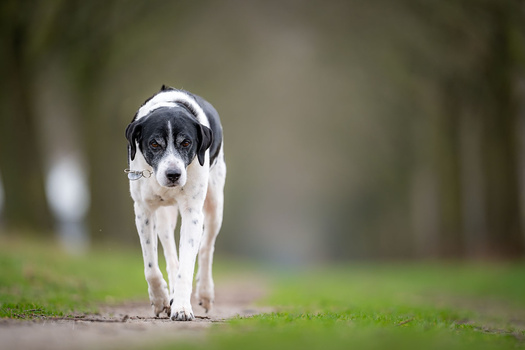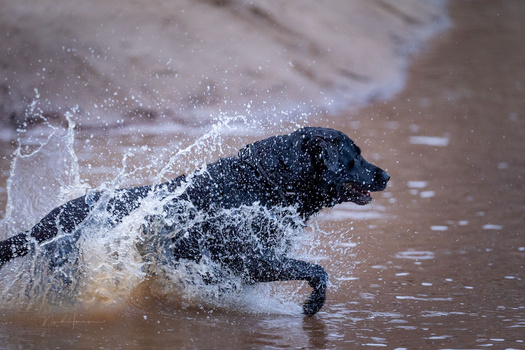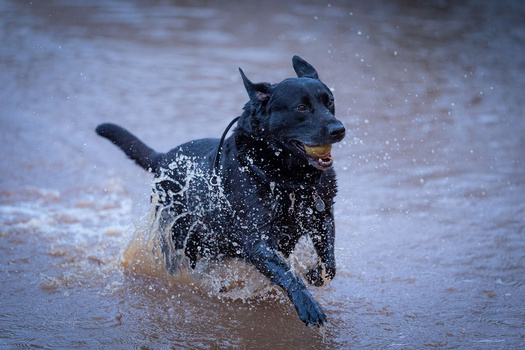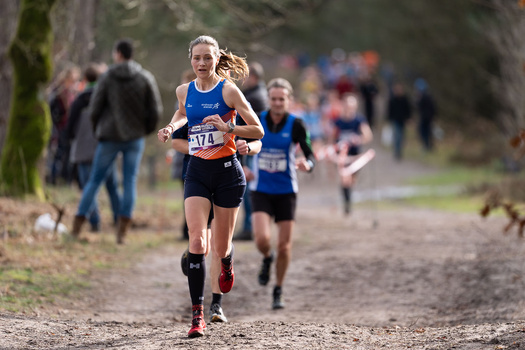When the Sony a9 Mark III is mentioned, it is all about the global shutter. While there is a benefit from this kind of sensor readout, the camera is much more than that. Although the global sensor needs to be mentioned, I want to look beyond that one single thing everyone seems to be obsessed about.
As the name suggests, the a9 Mark III is the third version of the action-orientated mirrorless camera by Sony. It’s the first camera that features a global shutter, which means it saves the sensor data in one single instance.
The global shutter solves a problem that has been a big problem with most Sony Alpha cameras (and that of other brands as well). The sensor readout of those cameras is too slow for fast-action photography, resulting in the rolling shutter effect. Those cameras also have a limited frame rate, often topping out at ten frames per second. Although it is enough for most action photography, more frames per second are always desired. The a9 series is designed for this purpose.

The Specifications
It’s important to have a look at the specifications to know what kind of camera this is:
- 25.2 MP stacked full-frame CMOS sensor
- Hybrid AF with object recognition for human, animal, bird, insect, train, and plane
- Autofocus sensitivity between -5 EV and 20 EV with ISO 100 and f/2 aperture
- In-body image stabilization up to 8 EV
- ISO range between 250 and 25,600 (expandable to ISO 125 and ISO 51,200)
- Fully articulating and tilting 3.2-inch LCD screen with 2.1 MP
- 9.44 MP OLED EVF with 0.9x magnification and up to 200 fps refresh rate
- Maximum 1/80,000-second shutter speed
- Captures up to 120 frames per second with full AF/AE tracking
- Pre-capture up to 1 second
- Video XAVC S: MPEG-4 AVC/H.264, XAVC HS: MPEG-H HEVC/H.265
- 4:2:2 10-bit 4K 60p
- Double card slot UHS-II-SD / CF-Express Type A
- Time-lapse, auto-framing (video), NR capture, and bulb-timer
- NP-FZ100 battery with 400/530 shots (EVF/LCD) according to CIPA
- Full-size HDMI port and Ethernet/LAN connection
- Weight: 617 grams
- Dimensions: 136 x 97 x 83 mm
Ergonomics and Handling
The Sony a9 Mark III looks much like the previous iteration, which is obvious. It has the same button layout, and the camera features a double settings dial on the left shoulder. The camera/video/S&Q switch underneath the PASM dial is new. It also has a fifth custom button at the front.

The grip has a completely new design with a comfortable tilted top where the shutter release button is situated. This makes it easier to reach the front dial without reorienting your hand. The shutter release button itself has a new design as well.

The LCD screen is similar to the a7R Mark V; It can be tilted and fully articulated at the same time. To be honest, it’s a wonderful design that works really well. The camera has the normal connections like a full-size HDMI port, USB-C-PD, headphones and microphone, flash connector, and an Ethernet/LAN connector.
The buttons on the Sony a9 Mark III are well-designed. They have great feedback, and there is a clear pressure point. Unfortunately, the dial on the back hasn’t changed, making it still difficult to operate without pressing one of the four buttons built into the dial by accident.
The Menu
There is not much to say about the menu itself. Obviously, it's the new design which is a big improvement over the previous design. It can be operated with both the touchscreen and the buttons.
However, the downsides of this menu structure are also still present. Some functions are not in the most logical location, and the description of some functions can be cryptic. The amount of customization options can be overwhelming, making it difficult to optimize the camera for your specific use. Although this is not limited to this specific model camera, it reduces the ease of use.

Dynamic Range and ISO Performance
Due to the design of the global shutter, the Sony a9 Mark III has a base ISO value of 250. This can be forced down to ISO 125. A simple ISO test shows an increased noise level compared to other Sony Alpha cameras. Noise becomes visible from ISO 3,200. An underexposed image at ISO 400 can be corrected up to four stops before noise becomes an issue.
A four-stop underexposed image at ISO 400 shows a similar amount of noise compared to a corresponding ISO value. More compensation will result in more noise. Although it’s less impressive compared to other Sony Alpha cameras, it’s still a good result.

Up to 120 Frames per Second
There are four frame speeds to choose from. There are five frames per second for the low setting, fifteen for medium, 30 for high, and no less than 120 frames per second for the high+ setting. These amounts can be changed if desired. It’s also possible to disable a few. However, this only applies to the menu. The dial on the left shoulder still offers the four settings.

I found the camera can keep up with the 120 frames per second speed without problems. The buffer is large enough to keep on shooting. There was not one single moment when the speed was reduced due to the buffer and writing speed. If you are afraid to miss the moment, the pre-recording function lets you record up to one second before fully pressing the shutter release button.
The Autofocus System
The Sony a9 Mark III has the same AI autofocus system that can be found in the A7R Mark V. Besides the object recognition features, it can predict the movement of the subject. Almost every aspect of the autofocus system can be customized. This makes it challenging to find the best possible setting for your kind of photography. The chance of a less optimum setting is present, reducing the effectiveness of the autofocus system.
I found the camera performing not as well as advertised. It had difficulties focusing on birds and animals. Even if the subject was easily recognizable, it didn’t focus on the subject. It happened with birds and with my dog as well.


The tracking has some challenges with 120 frames per second. Overall, it worked perfectly. The camera is able to keep the focus on the selected subject for the most time. However, sometimes it lost track of the subject. Not only in difficult situations, but also when the subject was clear in the frame without any obstruction.


The Global Shutter
There are two situations when the global shutter shows its strength. Action photography is the obvious one. Due to the instant sensor readout, there is absolutely no rolling shutter effect anymore. I believe this is the most important benefit of this system.

The other benefit is the ability to use flash with every desired shutter speed. In theory, it is even possible to set the maximum shutter speed of 1/80,000 second. Unfortunately, the t0.1 flash duration becomes the limited factor. I used a Profoto B10 flash of 250Ws for a photo session. The maximum shutter speed turned out to be between 1/1,000 seconds and 1/1,600 seconds at the given setting. With faster shutter speeds, the flash duration became too long, which resulted in not enough light for a proper exposure.

I did some research and discovered that for the Profoto B10, there is a minimum flash duration of 1/14,000th of a second at the lowest setting (0.5Ws). For practical use, a shutter speed of 1/500 second is perfectly usable, which offers a real benefit over the normal curtain shutters.
My Conclusion
The global shutter is a great technique that offers a solution for two problems that have been bugging a selected amount of photography enthusiasts for a long time. It eliminates the rolling shutter effect and flash photography is not limited to the flash synchronization time. On that account, it can be considered revolutionary.

However, I don’t think it changes photography in any way, as mentioned by some. It solves a few problems at best. What’s more of interest is the design of the camera and its performance regarding autofocus and tracking. After all, that’s where it must perform.
The autofocus system is good, and the tracking works great, keeping up with the impressive amount of frames per second. Unfortunately, it’s not always as reliable as I hoped for, even with the most optimized settings, as far as I can tell. If more complex settings are needed for more reliable autofocus and tracking, it shows that the customization is perhaps too complex.

The camera has great ergonomics. Its design is much better compared to its predecessors, and it handles perfectly. The two downsides are the dial on the back, as mentioned before, and the complex menu. The amount of customization is perhaps over-abundant, making it difficult to find the best possible settings.
What’s Positive
- Stacked sensor with global shutter
- No rolling shutter effect possible
- Flash is possible with every shutter speed desired
- 9.44 MP OLED-EVF with a maximum of 200 fps refresh rate
- Tilting LCD screen that is fully articulating as well
- Dial for image speed and autofocus settings
- Good ergonomics and good-quality buttons
- Speed up to 120 frames per second
- Pre-recording up to 1 second
- Extensive object recognition with AI engine for predicting movement
- Bulb timer and time-lapse functionality
- Full-size HDMI port
- Large buffer
What Can Be Improved
- ISO performance stays behind other cameras
- Autofocus is not always reliable
- Tracking loses the subject without visible reason
- Dial on the back
- Menu structure
- Finding optimum settings can be challenging
- Bulb timer is limited to 300 seconds
- NR noise reduction cannot be done in-camera
Should You Buy the Sony a9 Mark III?
I think the Sony a9 Mark III is a very capable camera. It’s made for the photographer who wants to capture fast action. For that, the global shutter is perfect. It eliminates the rolling shutter effect completely.
For flash photography, it has some benefits, but not that many. You will run into the t0.1 flash duration time, which limits the available shutter speeds. It allows two or three stops with faster shutter speeds, which is enough.

Besides these two benefits and the well-designed camera body, the Sony a9 Mark III isn’t a camera that will change photography forever. It’s a great camera, but expensive. It’s worth the money if you have run into problems due to the rolling shutter or the flash synchronization. If that never was a problem in the first time, it’s probably better to skip this camera. Don’t forget, it’s the first one to feature a global shutter. More will follow.
Of course, you have to decide for yourself if it’s worth the upgrade.
























Autofocus used to be good on Sony. We nearly boght sony when we abandoned canon because the R5s fell apart in the studio. I keep reading Sony and Nikon AF has gone bad. It's a shame.
--- "I keep reading Sony and Nikon AF has gone bad. It's a shame."
They are misinformation. I wouldn't be surprised if an intentional fake news. Almost all other reviewers have had very favorable experience with the AF. Below are just a couple of examples.
Watch at fullscreen at 4K:
(https://www.youtube.com/clip/UgkxTJeZv8qP49GnBG8cXI8H_k_Kbj_VzCur)
(https://www.youtube.com/clip/Ugkx_b8sHVJOTx56bVV1w9pLu2o1CDXdIWfy)
The author does not understand the camera well. Some of this is inaccurate and user error.
Which ones?
Why do you think so? Can you explain?
Flash sync can go well above 1/2000 if you adjust the flash timing setting in the camera so it can catch the light. The “longer” the flash the easier it is to adjust the timing actually. I did a full video about this on my YouTube channel.
I spoke a Sony representative during the SWPA 2024 in London. He mentioned this as well. I definitely will look into this if I get another opportunity to get my hands on this camera.
Thanks for the addition. Appreciate it.